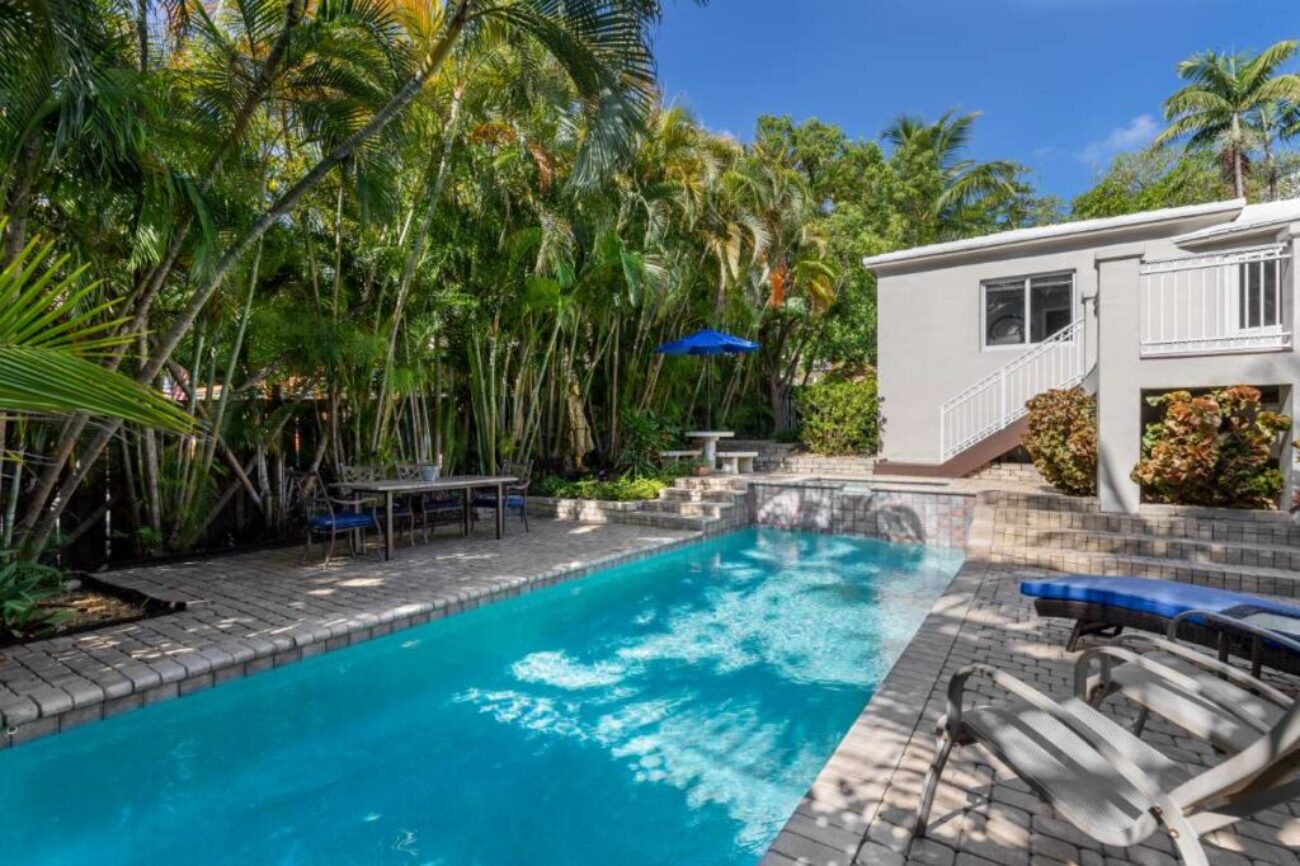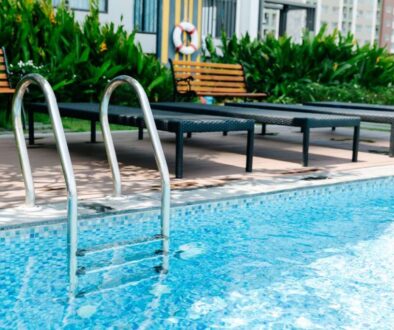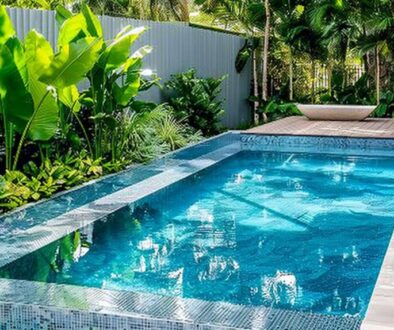Understanding pool chemistry doesn’t have to be complicated. Dive into the basics of maintaining the perfect pool waters.
How to Explain Pool Chemistry in Layman’s Terms
When it comes to enjoying a sparkling clean swimming pool, understanding pool chemistry is essential. However, for many pool owners, the science behind maintaining proper water balance can seem intimidating and complex. This blog post aims to demystify pool chemistry, explaining it in simple, relatable terms that anyone can grasp. We will cover the basics of pool chemistry, including pH levels, chlorine balance, alkalinity, and more, providing you with the knowledge you need to keep your pool safe and enjoyable. By the end of this article, you will feel empowered to tackle your pool maintenance with confidence.
Imagine stepping into your backyard on a hot summer day, looking out at your beautiful pool, and knowing that the water is not just clear but also chemically balanced for safe swimming. This scenario is achievable with a basic understanding of pool chemistry. Let’s break it down!
Understanding pH Levels
The first component of pool chemistry that every pool owner should know is the pH level. Think of pH as a measure of how acidic or basic the water is, on a scale from 0 to 14. A pH of 7 is considered neutral. For pools, the ideal pH range is between 7.4 and 7.6. Why is this important? If the pH is too low (acidic), it can cause skin and eye irritation, damage pool equipment, and decrease the effectiveness of chlorine. Conversely, if the pH is too high (basic), it can lead to scaling and cloudy water.
To maintain the right pH balance, you can use pH increasers (sodium carbonate) or pH decreasers (sodium bisulfate). Regular testing—typically once a week—is crucial, and you can easily use pool testing strips or a liquid test kit available at pool supply stores. By understanding and managing the pH levels, you are on your way to ensuring a safe swimming environment.
Chlorine: The Sanitizer You Need
Next, let’s talk about chlorine. Chlorine is the primary sanitizer used in pools to kill harmful bacteria and algae. It’s the superhero of pool chemistry! You may have heard of free chlorine and combined chlorine; here’s a simple way to differentiate between them. Free chlorine is the chlorine available to sanitize the water, while combined chlorine is what happens when chlorine bonds with contaminants, resulting in chloramines that can cause unpleasant odors and irritation.
For an effective pool, maintaining a free chlorine level of 1 to 3 parts per million (ppm) is ideal. If your chlorine level drops too low, you risk algae growth and unsafe swimming conditions. If it’s too high, swimmers may experience skin irritations. Shock treatments (adding a large dose of chlorine) can help when chlorine levels are low or after heavy pool use. Understanding how to manage chlorine will help you keep your pool clean and clear, ensuring a safe swimming experience for everyone.
Importance of Alkalinity
Another critical aspect of pool chemistry is total alkalinity, which acts as a buffer for your pH levels. Think of alkalinity as a stabilizer—it helps prevent drastic changes in pH. The ideal alkalinity range for pools is between 80 and 120 ppm. If the alkalinity is too low, the pH can fluctuate wildly, making it challenging to maintain balance. On the other hand, high alkalinity can lead to cloudy water and scale buildup.
To adjust total alkalinity, you can use sodium bicarbonate (to increase it) or muriatic acid (to decrease it). Regularly checking alkalinity levels will help you avoid common pool chemistry pitfalls, making it easier to maintain that perfect balance.
Calcium Hardness: Why It Matters
Calcium hardness refers to the amount of dissolved calcium in your pool water. It is essential for protecting your pool surfaces and equipment. If calcium levels are too low, it can lead to corrosion of metal parts and etching of plaster surfaces, while excessively high levels can cause scale formation. The recommended calcium hardness level is around 200 to 400 ppm.
To raise calcium hardness, you can add calcium chloride, while the only way to lower it typically involves draining some of the water and refilling with fresh water. Monitoring and managing calcium hardness is another piece of the puzzle in maintaining a well-balanced pool.
Additional Considerations
While pH, chlorine, alkalinity, and calcium hardness are the primary aspects of pool chemistry, there are a few additional considerations to keep in mind. Regularly cleaning your pool and filtering the water helps eliminate debris and bacteria, contributing to overall water quality. Additionally, consider the use of algaecides during warmer months when algae growth is more likely.
Another critical aspect is testing your water regularly. A simple pool water test kit allows you to monitor all these chemical levels easily. For optimal results, testing your pool water at least once a week is recommended, especially during peak swimming seasons.
Practical Tips for Pool Owners
Now that you have a clearer understanding of pool chemistry, here are some practical tips to help you maintain your pool:
- Test water regularly: Make it a habit to test your pool water at least once a week.
- Adjust chemicals as needed: Don’t hesitate to adjust pH, alkalinity, and chlorine levels as necessary to keep your pool balanced.
- Use a pool cover: Covering your pool when not in use can reduce debris and evaporation, making maintenance easier.
- Shock your pool: Regularly shock your pool, especially after heavy use, to maintain chlorine levels and clear any contaminants.
- Stay informed: Keep learning about pool maintenance and chemistry to improve your skills and knowledge.
Why Choose Professional Help?
While many pool owners successfully manage their pool chemistry, sometimes it’s beneficial to seek professional help. As experts in the field, professionals can provide detailed insights into the specific needs of your pool, ensuring that it is always in peak condition. Choosing to work with a knowledgeable pool business can save you time and stress, allowing you to enjoy your pool rather than worry about its maintenance.
If you’re considering entering the pool maintenance industry or want to learn more about pool routes, there are plenty of resources available. Companies like Tower Business Brokers specialize in connecting aspiring entrepreneurs with established pool routes for sale in Florida and Texas. This connection not only provides immediate income opportunities but also access to a loyal customer base and expert support.
Conclusion
Understanding pool chemistry doesn’t have to be daunting. By familiarizing yourself with pH levels, chlorine balance, alkalinity, and calcium hardness, you can ensure that your pool remains a safe and welcoming space for family and friends. Regular maintenance and testing are key to achieving the perfect balance of chemicals in your pool water. Remember, if you ever feel overwhelmed, seeking professional assistance can help alleviate some stress and ensure your pool is in top shape.
In summary, maintaining a clean and balanced pool requires a little knowledge and regular effort, but the rewards are well worth it. Dive into your pool season with confidence, knowing that you are equipped with the knowledge to keep your water sparkling clear. If you’re considering starting a business in the pool service industry, explore pool routes for sale that can jumpstart your entrepreneurial journey!



